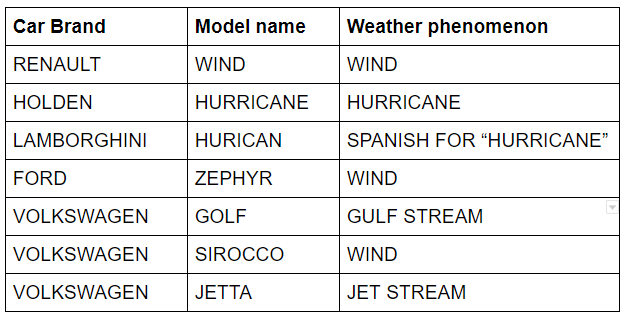What is a strong trademark?
How do you create a distinctive trademark?
The trademark you choose distinguishes your brand from your competitors’ brands. In many cases, it becomes a strong identifier that conveys to consumers what they can expect when they purchase your goods or services. All going well, it becomes a piece of intellectual property that is a valuable business asset. If your business grows and expands, your trademark could become a global brand, so you should research your options and choose it with great care.
To choose the strongest type of trademark, ideally you should come up with a brand name that is completely unique, even a fanciful or invented name that hasn’t been used before. Other distinctive types of trademark, not quite as strong as invented marks, include arbitrary or suggestive marks.
The last category of trademarks we’ll look at are the most difficult to protect. These are names that are descriptive of your goods and services. In most cases, these words are not registrable as word marks.
For example:
TRENDY HAIR DESIGNS for a hair salon
BARGAIN FURNITURE for a furniture store; or
THE ART SHOP for a store selling art and craft supplies
Also stay away from geographic names that literally describe where your business operates, such as BRISBANE TOURS for a tourism service in Brisbane or PARKWORTH PLUMBERS for a business in the suburb of Parkworth. You should also avoid the use of common surnames as these are often not registrable.
IP Australia takes the view that other people with the same surname should not be blocked from using it too. For example, you would struggle to register THOMPSON ACCOUNTING for financial services, because Thompson is a surname and “accounting” describes the nature of the business. It’s likely that there are a number of other Thompsons out there that are accountants!
The chart below demonstrates the continuum from strong to weak trademarks, using various shoe brands (real and made up) as examples.
Which are the best names to use for trademarks?
1. Brand new words (Pun intended!)
GOOGLE
IKEA
INXS
SONY
XEROX
ZIPPO
ZUMBA
Some unique names are acronyms, such as QANTAS, which came from Queensland and Northern Territory Aerial Services, or a blend of parts of other words. For example, the global brand ADIDAS, is an abbreviation of the name of founder Adolf (“Adi”) Dassler, but which is an original, recognisable brand that it easy to protect as a trademark. Combining or abbreviating words like this could be a good strategy for naming your brand. For example, the words "velvet" and "crochet” were combined to create the novel word, VELCRO.
2. Suggestive marks
Many companies have created names that are made up, yet suggestive of what the company offers, by combining two words to create an original trademark. Examples are:
ARAMEX (a contraction of Arab American Express)
NETFLIX or movies (flicks) on the internet
FEDEX, MICROSOFT, PINTEREST, SPECSAVERS are other examples of names which were created by combining two existing words that describe some aspect of the product or service.
Local Australian brands with suggestive names are VEGEMITE and WEET-BIX.
Suggestive marks are generally registrable as trademarks (provided they’re not too descriptive!).
3. Random, arbitrary marks
Another, generally strong form of trademark is one that uses an existing word, but in a context that is completely unrelated to the goods and service being offered, such as
CHROME
AMAZON
CHICCO
NOKIA
A number of car manufacturers have named various car models after winds and weather.
Some companies have very successfully used plant and fruit names to create distinct brands:
Music Bands
BANANARAMA
RED HOT CHILLI PEPPERS
BLACK-EYED PEAS
THE SMASHING PUMKINS
Tech Companies
BLACKBERRY for phones
RASPBERRY PI for computers
CHERRY CORPORATION for electronics
APPLE for computers and more
There is also a menagerie of animal names which have been used as brands. For example,
Shoes
KANGAROOS
REEBOK
CROCS
CATS and
GRASSHOPPERS
Bands
THE BEATLES
THE EAGLES
THE BYRDS
THE TURTLES
THE MONKEES
More examples are GREYHOUND for bus services and DOVE for cosmetic products.
A number of widely recognised brands combine animal names with other words:
FIREFOX
THUNDERBIRD
RED BULL
MIGHTY APE
HUSH PUPPIES
THE FAMOUS GROUSE
DEF LEPPARD
Some use animal sounds:
BUZZFEED
TWITTER
HOOTSUITE.
4 . Generic and/or descriptive marks
For trademark protection, brand names which are generic or descriptive are considered to be the weakest category because they’re the most difficult to register - because they describe your goods or services. If you use this kind of word as a business or product name, you might have a chance of success registering a logo device, but this will not necessarily prevent other traders from choosing similar names for their brands.
Examples of businesses or brands which have adopted descriptive names or personal names which are words which are unlikely to be accepted as trademarks include:
PETE THE PLUMBER
QUICK MOBILE REPAIRS
ADVANCED HAIR STUDIO
The good news is that these businesses were strategic about getting some level of trademark protection by obtaining registered trademarks for their logos, which incorporate their trading names.
If you are serious about protecting your brand and creating a highly distinctive trademark, you should take the time to come up with something original, something unique that will be a strong trademark that’s easy to protect.



